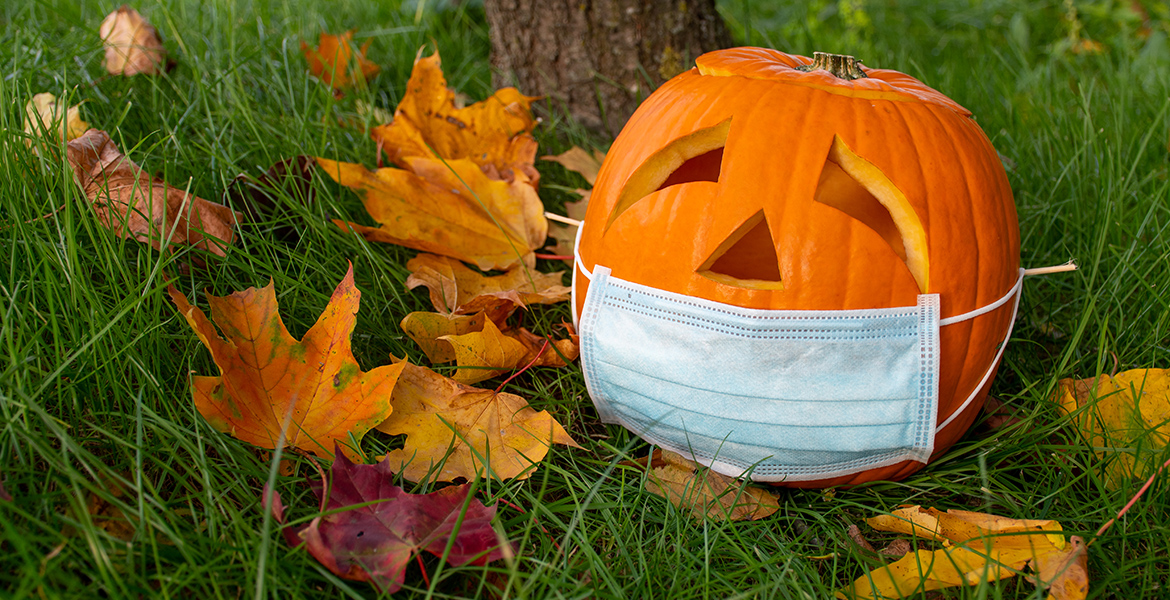
Halloween safety doesn't have to be scary
Monday, October 26, 2020
This Halloween, pandemic precautions have added an extra level of safety concern to celebrations, but precautions don’t have to scare people away from the holiday.
Safe Candy
It’s rare, but sometimes sweet treats can turn bad. Discoloration, tears in wrappers and tiny pinholes are signs that candy has been tampered with, said Janice Hermann, Oklahoma State University Extension nutrition specialist.
“Tell your children not to accept or eat anything that is not commercially wrapped,” Hermann said. “Inspect candy when returning home and throw away anything that looks suspicious.”
Another reason to examine candy closely is to avoid allergic reactions. Home-baked goods should be avoided because of the unknown ingredient factor, Hermann said.
The American Academy of Pediatrics says that more than half of all children’s choking episodes are caused by food. It is important to know how to prevent and respond to choking episodes, said Laura Hubbs-Tait, OSU Extension parenting specialist.
“Hard or sticky candy, chewing gum, popcorn and nuts are foods parents should keep away from children under the age of 4,” Hubbs-Tait said. “Non-candy treats like grapes, peanut butter, raw vegetables, meat or cheese, and hot dogs can also be a choking hazard.”
Removing small objects and candy from younger children can prevent choking, Hubbs-Tait said. Don’t let children run with food in their mouths.
Traffic Safety
Parents should discuss a house-to-house plan with older children they trust to go trick-or-treating with friends, Hubbs-Tait said. Drawing out a map is a good idea. Expect phone updates.
“The most common injuries to children on Halloween occur when they are pedestrians,” Hubbs-Tait said. “Motorists cannot easily see young trick-or-treaters at night, making it very dangerous. Never assume that all cars will stop in time. Just because the first car stops doesn’t mean the next driver will also be paying attention.”
Other parental tips include:
- Put reflective tape on costumes and trick-or-treat bags.
- Use sidewalks whenever possible, and only on well-lit streets. When sidewalks are absent, stick to the far edge of the street and face oncoming traffic.
- Never cut across yards or use alleys.
Viral Safety
Wearing a protective face mask is strongly advised to limit the spread of the COVID-19 virus, even while trick-or-treating, said Barbara Brown, OSU Extension food specialist. However, a costume mask is not designed to serve the same purpose.
If a holiday face covering is absolutely necessary, creativity is called for.
“Wearing a costume mask on top of a healthcare face mask can be dangerous, decreasing the ability to breathe or see,” Brown said. “Instead masks should be incorporated into costumes by using fabric paint, markers or embroidery as decoration.”
To reduce the risk of virus transmission on candy wrappers, Brown suggested handwashing before putting treats into individual bags, as well as after unwrapping candy and before consumption. In short, go into safety overdrive, she said.
Safe Nutrition
For all the other concerns layered on Halloween this year, it’s easy to forget about one of the most fundamental health issues, Hermann said.
“Treats can fit into a healthy diet, but they need to be kept in moderation,” Hermann said. “Discussing the importance of nutrition with your children beforehand is the best prevention.”
Having a meal or snacking before trick-or-treating can help children control their urges later in the evening, she said. Some people hand out healthier alternatives such as raisins, popcorn, sugar-free gum, pretzels, sunflower seeds, animal crackers and sugar-free hot chocolate packets. Common non-food treats include toothbrushes, pencils, stickers, toys, glowsticks and bubbles.
Parents should set limits, she said.
“Consider giving children a day or two to enjoy their Halloween candy,” Hermann said. “Let them pick out what they want in appropriate serving sizes and freeze the rest.”
Frozen candy can also used for baking later in the holiday season, Hermann said. Peanut butter cups, M&M’s, Snickers, Heath Bars and peppermints come in handy.
The Center of Disease Control and Prevention provides additional information on safe Halloween celebration.
MEDIA CONTACT: Lauren Raley and Brian Brus | Agricultural Communications Services | 405-744-6792 | BBrus@okstate.edu
